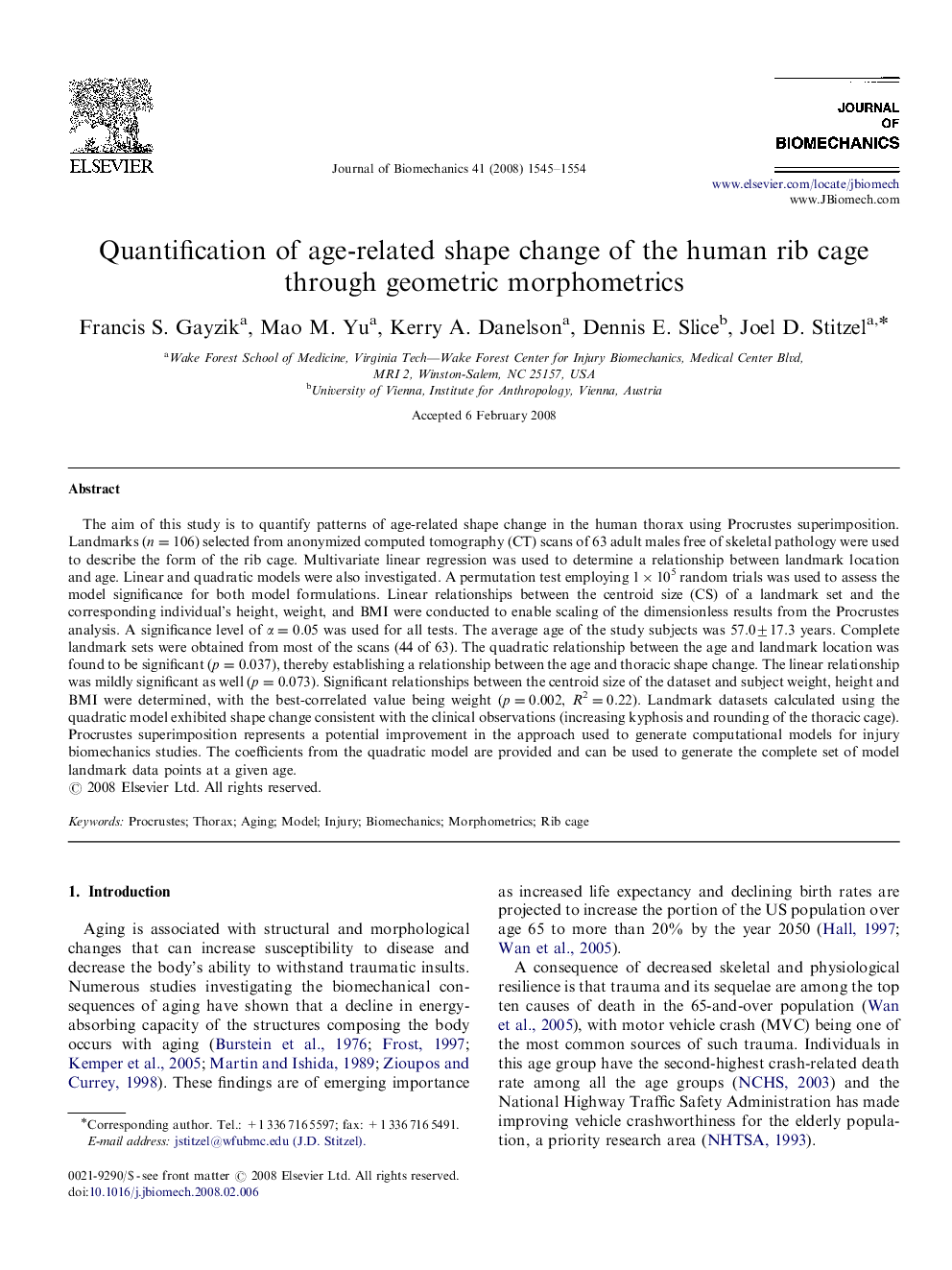| Article ID | Journal | Published Year | Pages | File Type |
|---|---|---|---|---|
| 875281 | Journal of Biomechanics | 2008 | 10 Pages |
The aim of this study is to quantify patterns of age-related shape change in the human thorax using Procrustes superimposition. Landmarks (n=106) selected from anonymized computed tomography (CT) scans of 63 adult males free of skeletal pathology were used to describe the form of the rib cage. Multivariate linear regression was used to determine a relationship between landmark location and age. Linear and quadratic models were also investigated. A permutation test employing 1×105 random trials was used to assess the model significance for both model formulations. Linear relationships between the centroid size (CS) of a landmark set and the corresponding individual's height, weight, and BMI were conducted to enable scaling of the dimensionless results from the Procrustes analysis. A significance level of α=0.05 was used for all tests. The average age of the study subjects was 57.0±17.3 years. Complete landmark sets were obtained from most of the scans (44 of 63). The quadratic relationship between the age and landmark location was found to be significant (p=0.037), thereby establishing a relationship between the age and thoracic shape change. The linear relationship was mildly significant as well (p=0.073). Significant relationships between the centroid size of the dataset and subject weight, height and BMI were determined, with the best-correlated value being weight (p=0.002, R2=0.22). Landmark datasets calculated using the quadratic model exhibited shape change consistent with the clinical observations (increasing kyphosis and rounding of the thoracic cage). Procrustes superimposition represents a potential improvement in the approach used to generate computational models for injury biomechanics studies. The coefficients from the quadratic model are provided and can be used to generate the complete set of model landmark data points at a given age.
